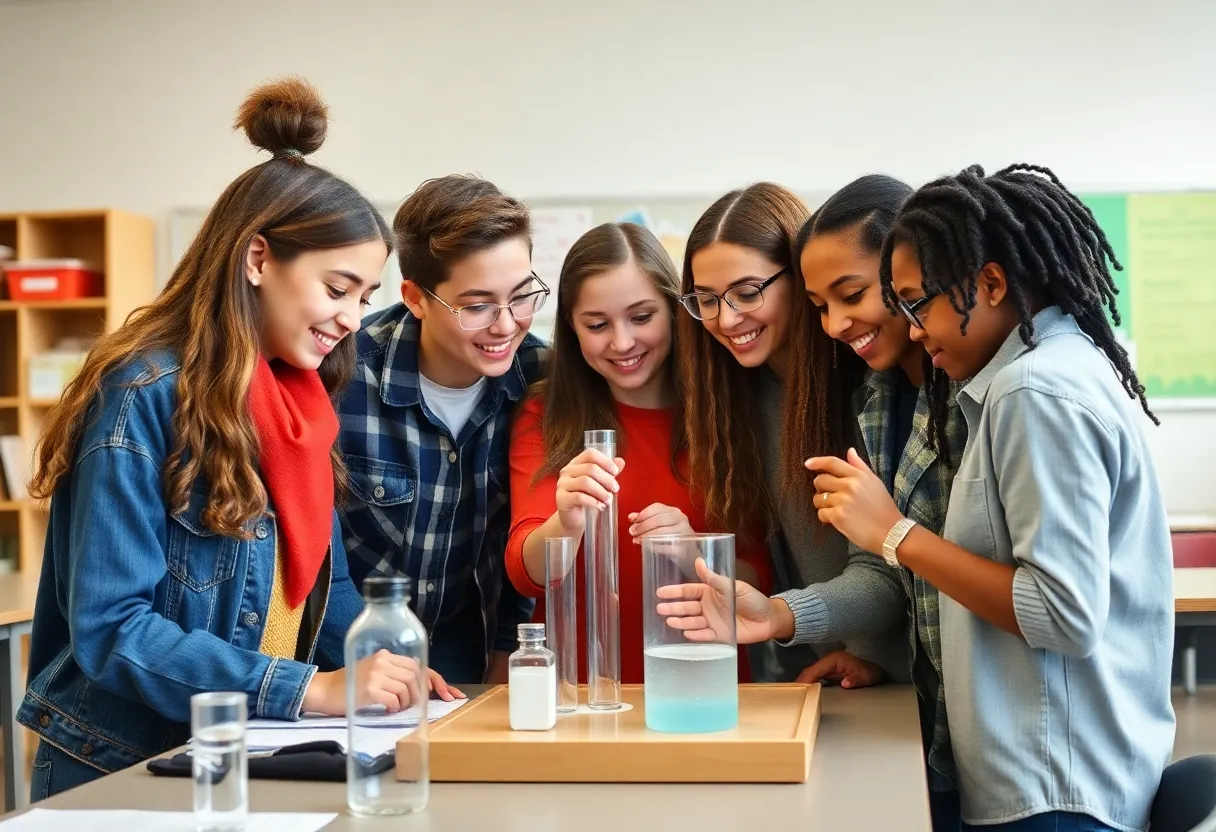Tucson, October 25, 2025
High school students from the Tucson Unified School District achieved significant success at the national Science Olympiad, securing first place in environmental science and second in robotics. Their innovative water purification device, addressing Arizona’s drought, showcased practical applications in sustainable water management. The team’s rigorous preparation involved hands-on projects and collaborative efforts, supported by community-funded STEM programs. Their victories not only highlight their talents but also inspire younger students in the district to pursue science careers.
Tucson Students Secure Top Honors at National Science Olympiad
Tucson high school students from the Tucson Unified School District have achieved remarkable success at the national Science Olympiad competition, earning top honors in key categories over the weekend. The event, held virtually, highlighted the talents of a five-member team who excelled particularly in robotics and environmental science, showcasing innovative solutions to real-world challenges.
The team’s standout accomplishment came from their development of a water purification device tailored to combat Arizona’s ongoing drought issues. This project not only won first place in the environmental science division but also demonstrated practical applications for sustainable water management in arid regions. In the robotics category, the students impressed judges with their precise engineering and problem-solving skills, securing second place overall. These victories mark a significant milestone for the district, underscoring the effectiveness of its science, technology, engineering, and mathematics (STEM) initiatives.
Team Composition and Preparation
The winning team consists of five dedicated high school students who spent months preparing for the competition. Under the guidance of district educators, they focused on hands-on projects that combined theoretical knowledge with practical innovation. The water purification device, for instance, incorporates advanced filtration techniques to remove contaminants from limited water sources, a critical need in Arizona where drought conditions persist. This device uses affordable materials to make it accessible for community use, reflecting the students’ understanding of local environmental pressures.
In robotics, the team built and programmed autonomous systems capable of navigating complex tasks, simulating real-life scenarios like disaster response or environmental monitoring. Their preparation involved after-school sessions, collaborative brainstorming, and iterative testing, all supported by the district’s robust STEM curriculum. Educators note that such rigorous training has been instrumental in building the students’ confidence and technical expertise.
Role of Community Support in STEM Success
The success of these students is largely attributed to dedicated STEM programs funded by community grants. These grants have enabled the Tucson Unified School District to expand resources, including lab equipment, software tools, and professional development for teachers. Over the past few years, local donations and partnerships have injected vital funding into science education, allowing more students to participate in competitions like the Science Olympiad. This financial backing has created a nurturing environment where innovation thrives, helping to bridge gaps in access to advanced learning opportunities.
Beyond the competition wins, the achievements are inspiring a new generation of students. Younger pupils in the district are showing increased interest in science careers, with enrollment in STEM electives rising steadily. The visibility of these high school successes serves as a powerful motivator, encouraging elementary and middle school students to explore scientific fields early on. This ripple effect strengthens the overall educational landscape in Tucson, fostering a culture of curiosity and problem-solving.
Broader Implications for Education and Environment
The national recognition highlights the potential of student-led innovations to address pressing issues like water scarcity. Arizona’s droughts have intensified in recent years, affecting agriculture, wildlife, and urban water supplies. The students’ water purification device offers a glimpse into scalable solutions that could benefit not just the state but similar regions nationwide. By participating in the Science Olympiad, these young innovators are gaining skills that extend far beyond the classroom, preparing them for future roles in research, engineering, and policy-making.
The virtual format of this year’s competition allowed broader participation, with teams from across the country competing in real-time challenges. For Tucson Unified, this platform amplified their students’ voices on a national stage, drawing attention to the district’s commitment to excellence in STEM education. As the team reflects on their victories, the focus now shifts to future competitions and continued development of their projects, potentially leading to patents or community implementations.
In summary, the triumphs of Tucson’s Science Olympiad team exemplify how targeted educational investments can yield extraordinary results. These students’ dedication, combined with community support, not only secures accolades but also paves the way for meaningful contributions to society. As Arizona grapples with environmental challenges, such initiatives remind us of the innovative spirit emerging from local classrooms.
FAQ
What achievement did Tucson students accomplish at the national Science Olympiad?
Tucson high school students from the Tucson Unified School District secured top honors in robotics and environmental science categories at the national Science Olympiad competition held virtually over the weekend.
What specific project contributed to the team’s success in environmental science?
The team of five high schoolers developed an innovative water purification device addressing Arizona’s drought issues, which helped them win first place in the environmental science division.
How did the students prepare for the competition?
The five-member team spent months preparing through after-school sessions, collaborative brainstorming, and iterative testing, guided by district educators and supported by the STEM curriculum.
What factors were credited for the team’s victory?
Educators credit the win to dedicated STEM programs funded by community grants within the Tucson Unified School District.
How is this success inspiring other students?
The achievements are inspiring younger pupils in the district to pursue science careers, with increased enrollment in STEM electives.
Key Features Chart
The following table outlines the key features of the Tucson students’ Science Olympiad achievements:
| Feature | Description |
|---|---|
| Competition Event | National Science Olympiad, held virtually over the weekend |
| Participating School District | Tucson Unified School District |
| Team Size | Five high school students |
| Key Categories of Success | Robotics (second place) and environmental science (first place) |
| Innovative Project | Water purification device addressing Arizona’s drought issues |
| Supporting Factors | Dedicated STEM programs funded by community grants |
| Inspirational Impact | Encouraging younger pupils to pursue science careers |




